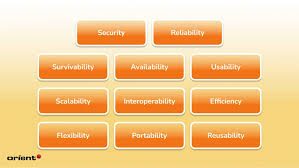Non-Functional Testing: Why Performance and Usability are Just as Important as Functionality

Introduction
Think of software as a grand theatre production. The actors (features) deliver their lines flawlessly, the plot (business logic) unfolds smoothly, and the curtain rises on cue. Yet, if the lighting blinds the audience, the sound system crackles, or the seats creak uncomfortably, the experience is ruined. The performance might technically succeed, but the audience walks away dissatisfied. This metaphor captures the essence of non-functional testing—it’s about ensuring the stage itself supports the brilliance of the show.
Beyond the Script: Performance as the Pulse of Experience
Imagine a medical team examining not just a patient’s visible wounds but also their heartbeat, oxygen levels, and stamina. Functional testing checks whether the “wounds” are treated—do the features work? Non-functional testing, however, measures the pulse—does the system endure heavy loads, scale under stress, and respond without hesitation?
Consider a payment app that processes transactions correctly in normal conditions but stumbles when thousands of users flood it during a festival sale. Without performance testing, the app collapses at the exact moment it’s needed most. Learners in a Software Testing Course are trained to simulate these stormy scenarios, discovering whether an application can not only perform but endure.
Usability: The Invisible Bridge Between Users and Systems
A bridge might be structurally sound but terrifying to cross if it sways too much, lacks handrails, or feels unstable. Similarly, a software application may deliver accurate results yet alienate users if the design feels clunky or unintuitive. Usability testing builds that invisible bridge of trust, ensuring that every step—whether clicking a button, filling a form, or navigating a menu—feels natural.
In today’s competitive digital marketplace, usability often determines whether a product becomes indispensable or abandoned after one frustrating session. For professionals undergoing a Software Testing Course, hands-on usability assessments highlight that quality is as much about emotional comfort as technical correctness.
Security, Reliability, and the Silent Guardians
Think of non-functional testing as the security guards and structural engineers of a skyscraper. While tenants admire the architecture and enjoy the amenities, they rarely think about the fire alarms, evacuation drills, or load-bearing beams—yet these unseen elements guarantee safety and trust.
Security and reliability testing are the unsung heroes. They ensure systems remain available during sudden surges, defend against malicious attacks, and recover gracefully from unexpected failures. In mission-critical industries like banking, aviation, or healthcare, these silent guardians prevent catastrophes that functionality alone cannot avert.
The Ripple Effect of Neglect
Neglecting non-functional testing is like constructing a luxury cruise liner but forgetting lifeboats and navigation systems. The ship sails beautifully until the first storm hits, exposing its vulnerabilities. Businesses that ignore usability and performance discover too late that customers care less about clever features and more about seamless, safe, and reliable experiences.
Case studies abound of major brands losing millions due to sluggish sites, confusing interfaces, or unplanned downtime. These examples underline that non-functional qualities aren’t “add-ons” but core pillars of success.
Weaving Non-Functional Testing into the DNA of Quality
The real power of non-functional testing lies in its integration from the earliest stages of development. When performance benchmarks, usability studies, and resilience planning are baked into the project lifecycle, software doesn’t just function—it thrives. Modern teams use automated load tests, real-user monitoring, and iterative usability feedback to keep applications both fast and human-friendly.
The best testers understand that quality is not a box-ticking exercise but a lived experience. They act as both engineers and storytellers, ensuring every click, scroll, and transaction feels effortless.
Conclusion
Non-functional testing is the quiet architect of user satisfaction. Like the lighting, acoustics, and seating of a theatre, it shapes how the audience perceives the performance. Performance, usability, reliability, and security are not afterthoughts but essential threads in the fabric of software excellence.
For those pursuing careers in quality assurance, mastering these dimensions is as vital as learning functional checks. A Software Testing Course that instills this holistic perspective equips future testers to craft systems that not only work but delight, endure, and inspire trust. Because in the end, great software is not remembered for the features it delivered but for the experience it created.



